Heather Chontos Inspires with Abstract Expressionism at Voltz Clarke Gallery
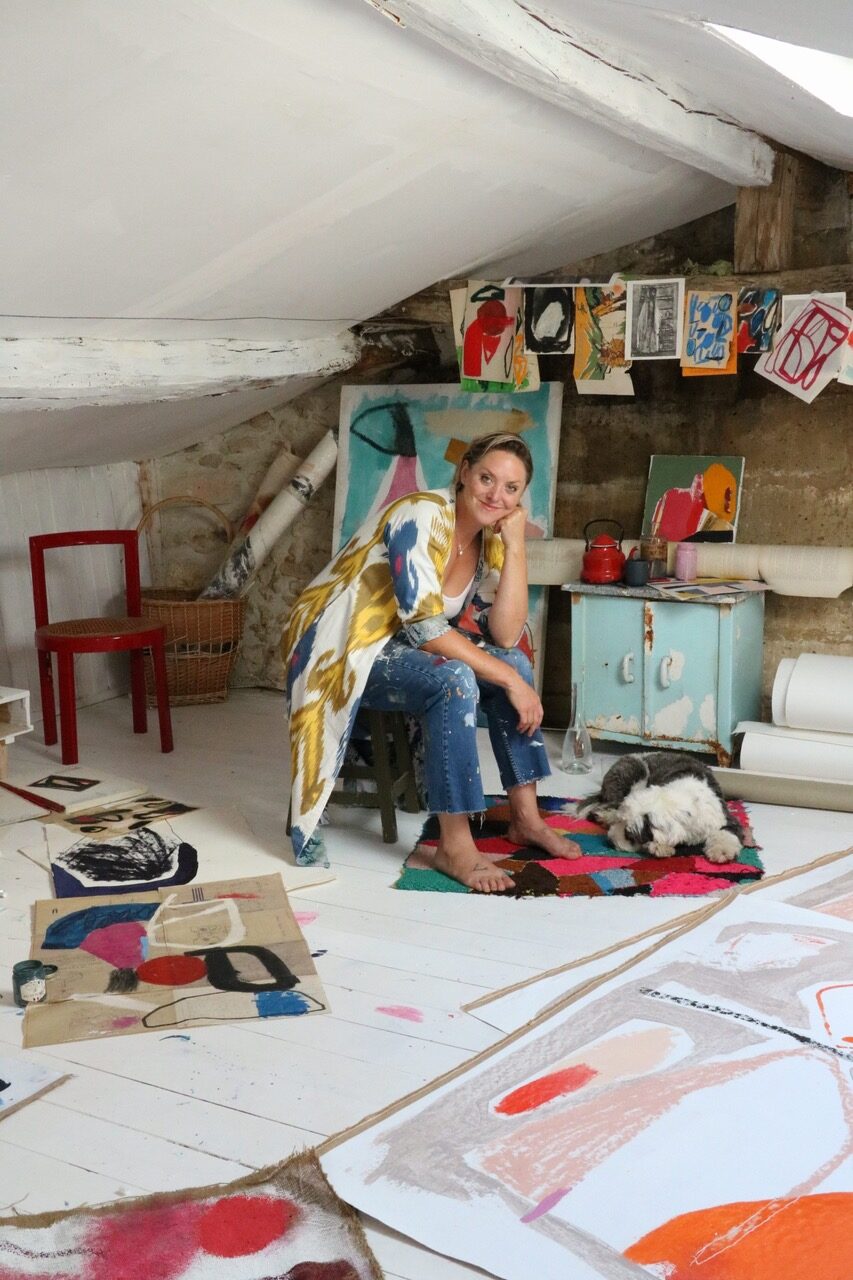
Heather Chontos’ third solo exhibition with Voltz Clarke Gallery in Manhattan is currently on view on the Lower East Side through November 14.
Travel and landscapes inspire artist Heather Chontos as she transforms the view of European mountain ranges into abstract forms on the surface of her canvases, focusing her Abstract Expressionist work on penetrative marks and saturated fields of color. The American artist uses expressive gestures to connect colors and forms with unique and beautiful mark-making which she creates with scraps of plastic, such as hotel room key cards. Her intuitive way of painting results in large, colorful abstract works that transform her experiences into paintings that deeply connect with their viewers.
Born in New York, Chontos currently lives and works in France. She has moved and lived in various countries around Europe, which has inspired a lot of her work. The commotion of moving, the introduction of a new environment, landscape, people, food, colors, and languages fuels the artist’s expressive painting and shifts her work in new ways. Her love of languages has allowed her to create her own way of speaking to her viewers with visual expression through abstract art.
The artist’s work is currently on view at Voltz Clarke Gallery in New York with her show Rosengarten, open until November 14.
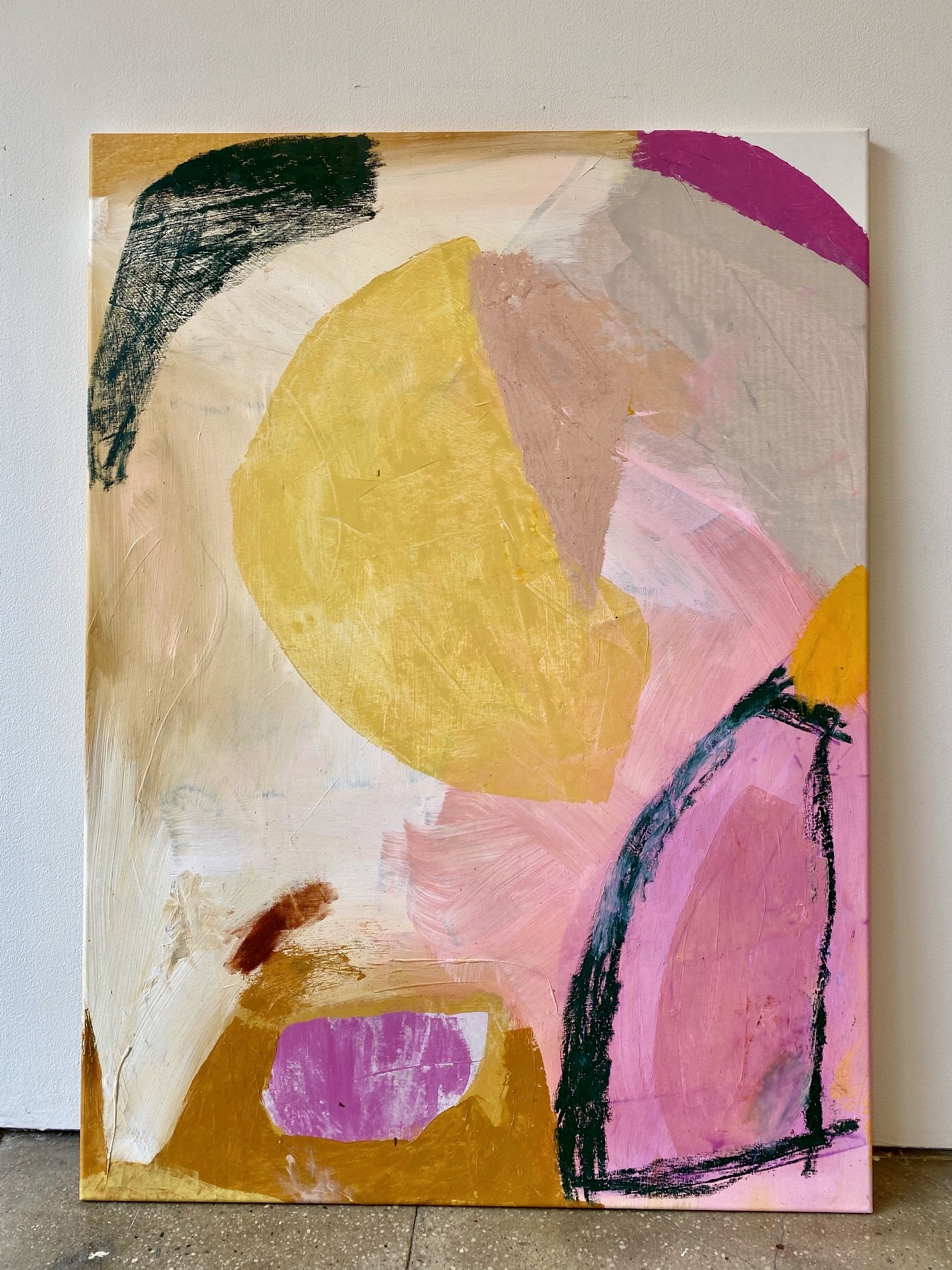
You worked as an art director and a prop stylist for about twenty years before focusing your work towards painting. What made you decide to leave your previous job and direct your time towards your personal work?
It was less of a “leaving of my job” and more of a transition in my mind from art director to artist. I continued to work on the side with commercials and magazines for the next few years. I had to convince my own brain that I could define myself differently after such a long time defining myself as something else. Honestly, I felt a little ridiculous because at the time I was a single parent of two daughters, one of whom was less than a year old, but I knew I needed to do it. The world of art directing and prop styling was previously one of creative exploration and discovery and it had changed to be very commercial. Everything in my body needed to just paint, work within my own pace and my own vision, not someone else’s.

What drew you to want to work with Abstract Expressionism?
It’s funny, I loved abstraction since I was in middle school. My old art teacher used to get very angry with me in studio art class and pull out books of the Austrian artist Oskar Kokoshka and say “look at this mess” this is what your work looks like. I would ask if I could bring the book home because I loved it so much. For me abstraction is in the wildness, the movement, the rhythm of mark making, the color or lack of color and the imperfection. I used to do fashion illustration, but with collage because drawing it perfectly was too much to handle. I liked the idea of figurative and wanted to succeed with it, but my hands would just go in different directions and if I was trying to represent something it felt wrong, so abstraction was for me perfection.
Can you describe your artistic process and your unique ways of mark making by using plastic items like hotel room keys and credit cards?
For me, the plastic card and other similar found tools, represent a method of painting that has a direct impact straight from my hand and the strength and force of my impression on the paint to the surface. I like to work on a larger scale and make large physical sweeping movements which create a greater depth and layering to the colors that I like to use. It’s an emotional response and unleashing so the mark making needs to represent that in form , but also in physical process.

The vibrant colors that you use in your works are some of the most striking aspects of your paintings. How would you describe the color palette you work with as an artist?
Color represents fearlessness, love, and deep and powerful connection. When I am painting, I am honest with myself and everyone else, its like becoming transparent and having ultimate confidence, which I don’t always have, so color takes on those feelings and they are like magic potions when properly combined.
As a child you experienced temporary blindness due to an illness. How did your experience with sight change the way you see the world now as an artist? Has it affected the way you look at art in particular?
I don’t know if it affects the way I see art specifically, but it has affected the way I see everything as an artist and just as a normal everyday human being. It’s as if I want to take it all in and never let it go because when I didn’t have the ability to visually “see” it was possible to have imagination, but there is an element of sadness that existed for me because I knew what I was missing. Now I never want to miss anything. I want to see it all and ingest it all. I enjoy every moment of light that I can experience because not having that is not a happy memory for me, though am grateful to understand the difference and never ever take it for granted.
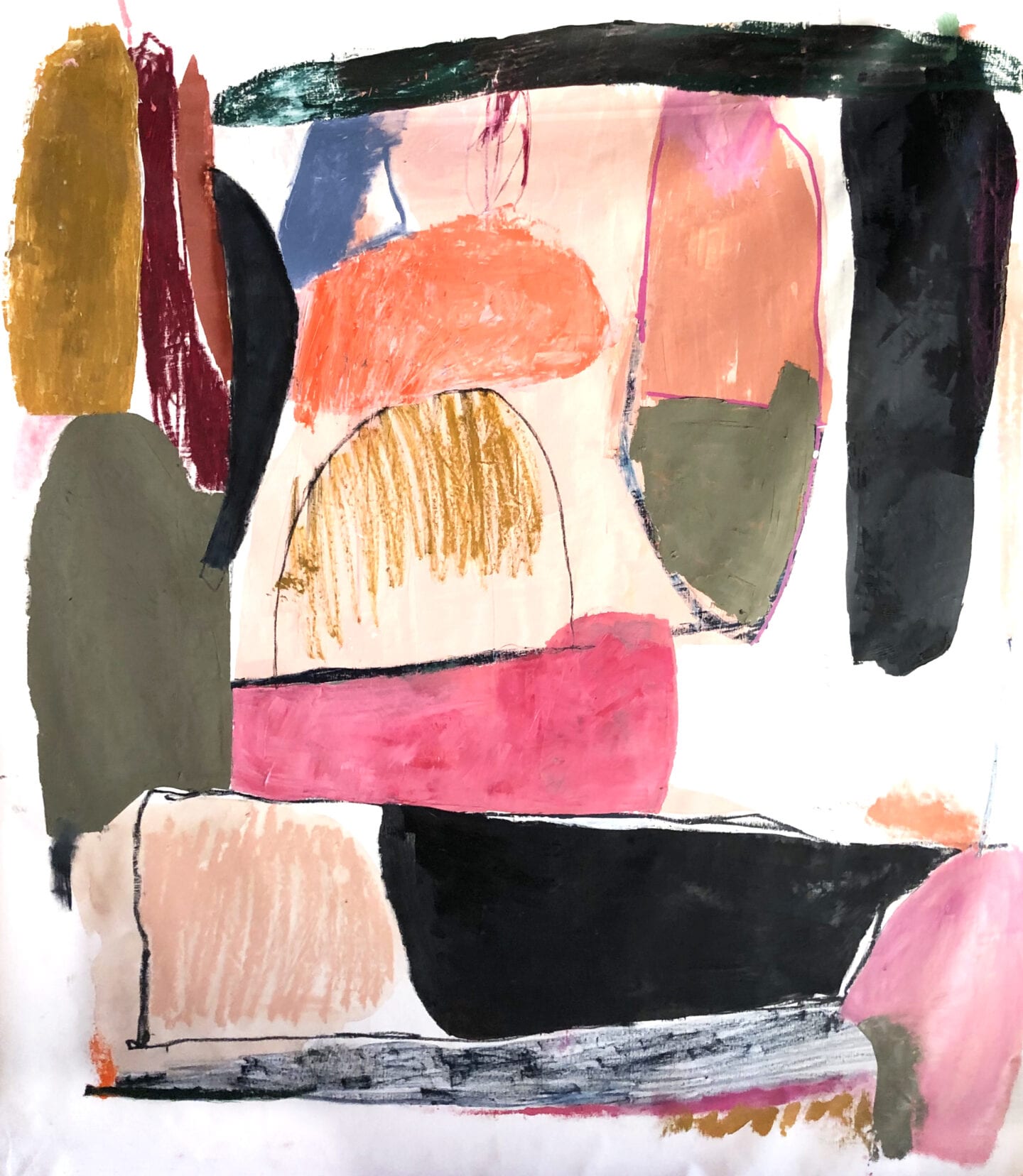
Is there a particular Abstract Expressionist artist that has largely influenced your body of work?
No. I love so many, and they are all dead. I love Twombly, Tapies, Rosenthaler, Joan Mitchell, and the list goes on…
You have moved around quite a bit in your lifetime, living both in the U.S. and different parts of Europe. How does a shift in environment and travel change your work? Have the different places you’ve lived influenced your artistic process in different ways?
I am American and I have a lot of respect for what that used to mean, but I don’t feel at home in the USA and that has been clear to me since I was 13 years old. The commotion of moving around has affected my work in many different ways both negative and positive. The shift inspired me to have a different perspective, which is so important. I also adore languages. If I were to go back again and study something different I would study language and become a linguist, so travelling and using that part of my brain to learn and speak different languages is another way for me to find new expressions and become inspired. Landscape, people, music, sounds, light changes, colors, food, all of it makes a big impact on my ability to feel the intuitive inspiration to create something new. I also find and discover new materials made in different countries, like my favourite Majorelle blue pigment from Morrocco! I love this part of it, the prop stylist in me also love this part of it too.

What is your favorite thing about the European art scene?
There is a lot more support for artists in the European art scene and there is a respect for diversity of mediums in fine art. Also it is easy to get from place to place (or it used to be) allowing for access to such a huge network of cultural diversity in the art scene. Paris is such an amazing center for so many different types of work, as is Berlin and there is funding to make it available to everyone which is important
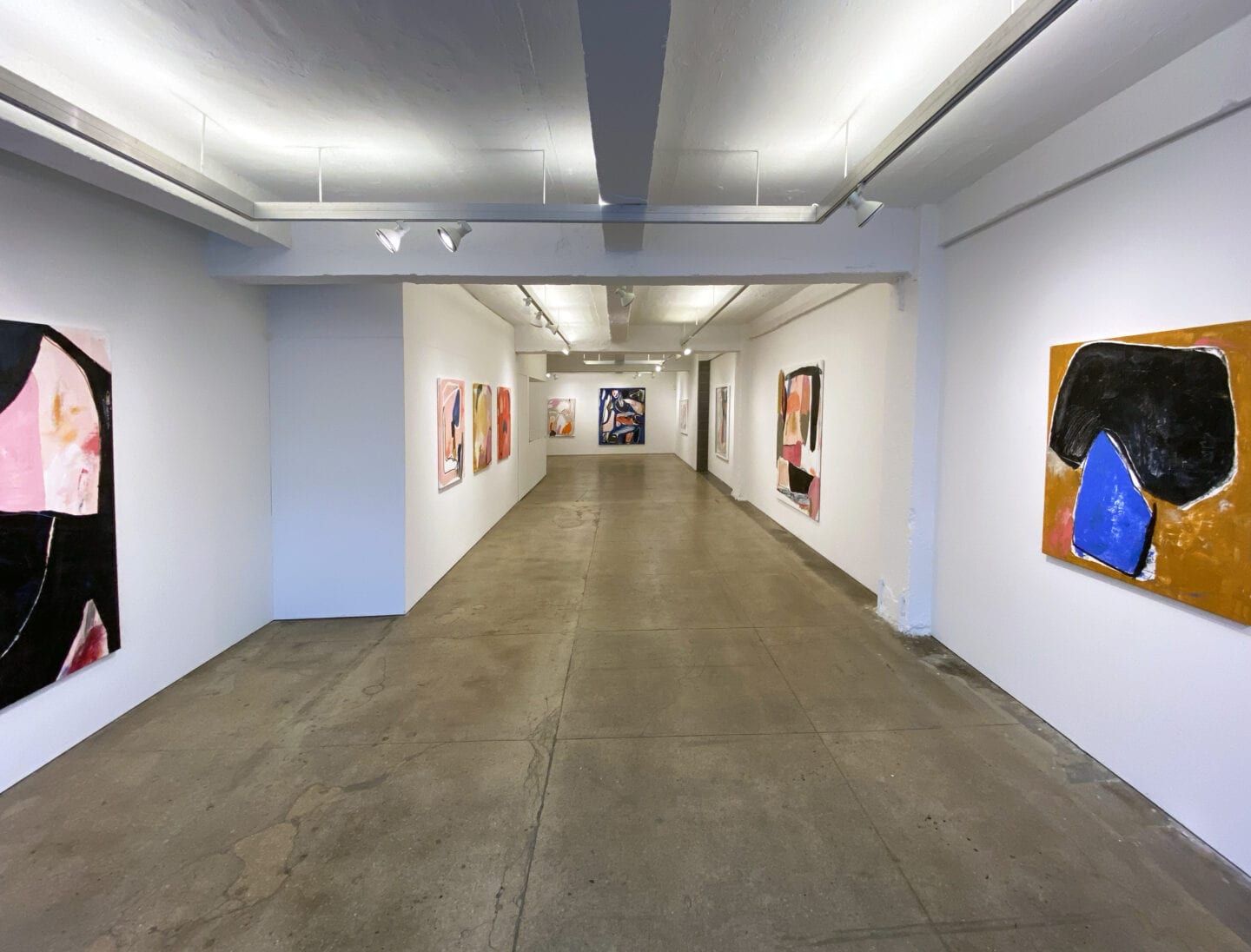
You were born in the U.S. but now reside in France. How would you describe your studio in France? What is the most important aspect of your work space that helps drive your creativity?
SPACE! I have so much space and I need it for all the larger works I make. Space is hugely important and it is in an old barn attached to our house so I love that I can wake up and go there and make my coffee and get to work straight away, after feeding the chickens, the dog and the kittens of course. The other important part is of course the natural light. I have a beautiful glow of natural light most of the day. I have some of my favourite objects in there like my old glass jars and my painter stools, my wooden hooks, my linen clothes, my tools and my favourite paintings shirt. These objects help define the space where I work because apart from the obvious needs of light and room to move around there is a staging or a scenery that needs to happen for me to feel like I can get to work.
Who is your current favorite French artist?
Agathe de Bailliencourt, but she lives in Berlin. She is an amazing painter who I discovered when I rented her apartment for the Christmas holidays one year with my daughters. We stayed in touch and I discovered her amazing work. She really is amazing.
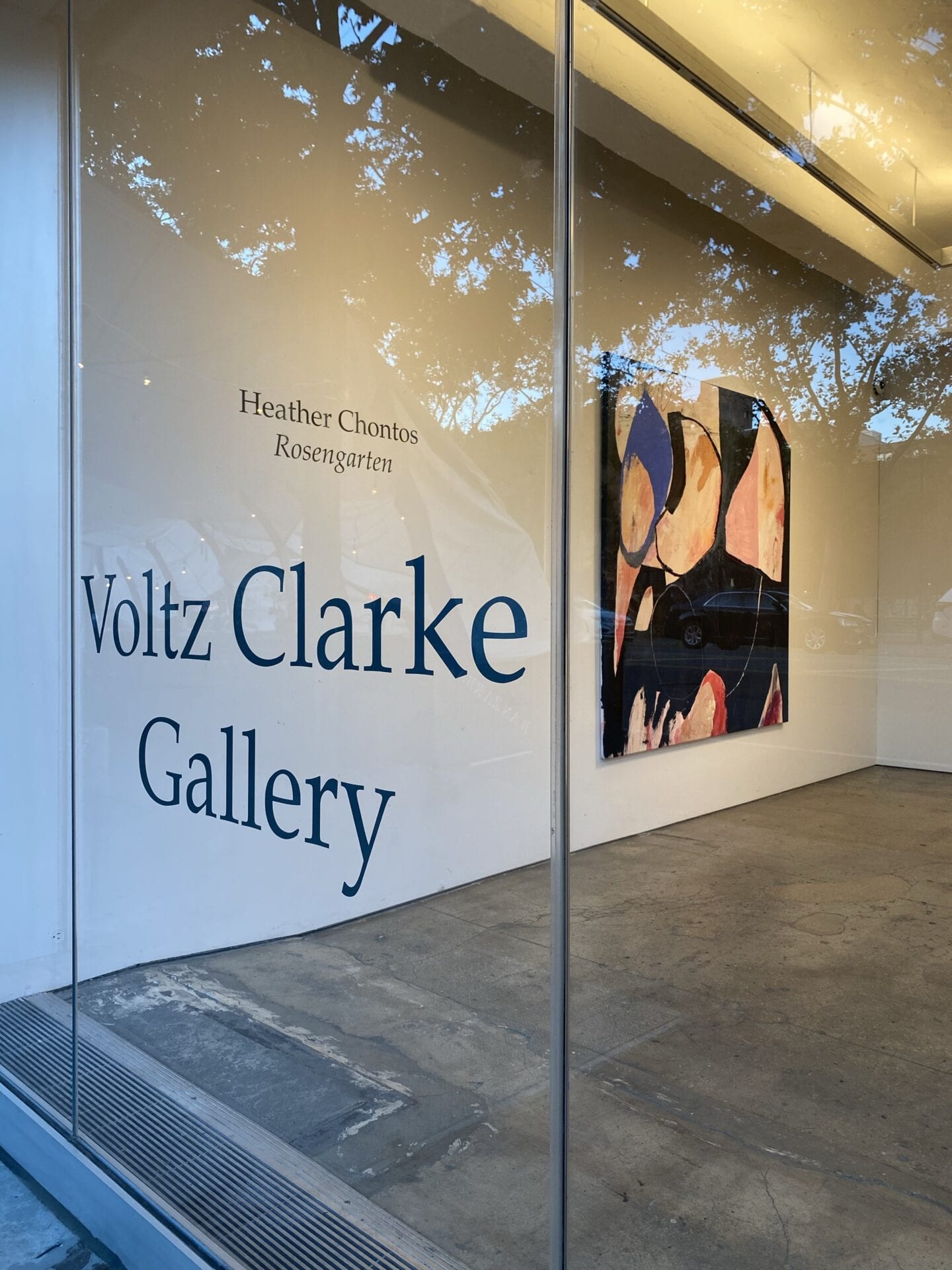
Your current show is influenced by a particular mountain range. Can you describe how you use a place or a landscape to create a visual abstract expressionist piece? What are the key elements of a landscape that you utilize in your work?
It really comes down to a feeling. My work is not planned, it is intuitive. Landscape and light are huge parts of what builds my inner feeling to create something. I have spent a lot of my life searching for great landscapes that then I like to dissect in my mind through color and abstraction. I can look at a mountain range, like the Dolomites in South Tyrol and imagine them as if they were just colorful shapes and the light in between the spaces takes on its own form, sometimes solid and opaque, sometimes flowing and translucent, there are lines and deep marks in all of nature and when you stop to notice them you can interpret them however you like, for me it is in this moment of discovery and translation like a language and learning a new word and its meaning a new visual can also form its own language which insights a feeling. In my work I feel there is nothing worth anything unless it makes you feel something. And nature, the great forms around us in nature make me feel something every time I experience them.



